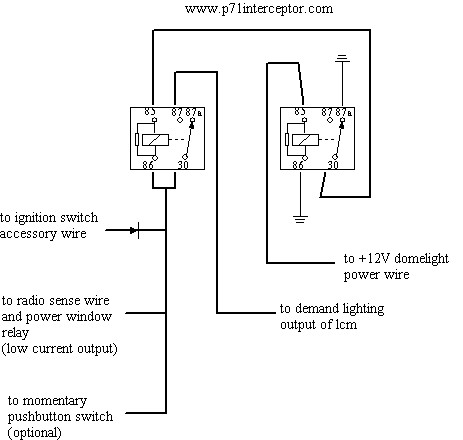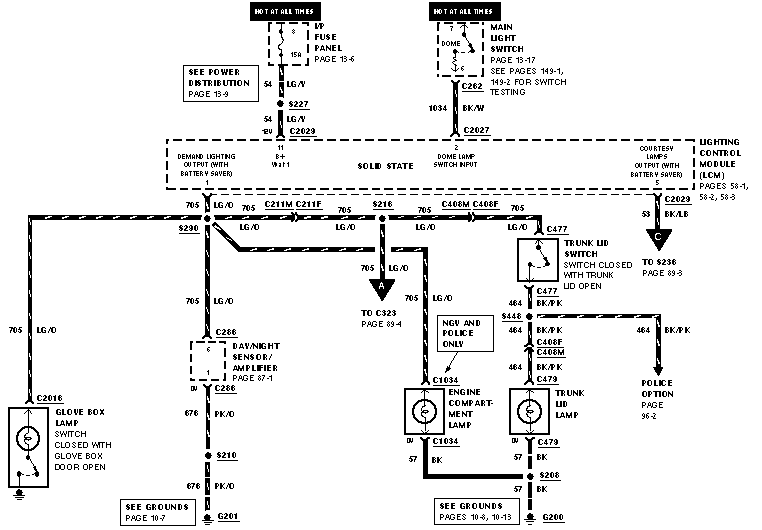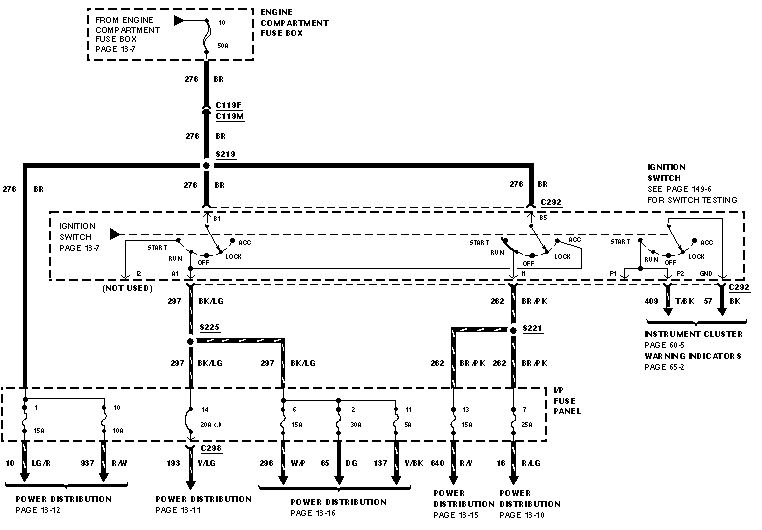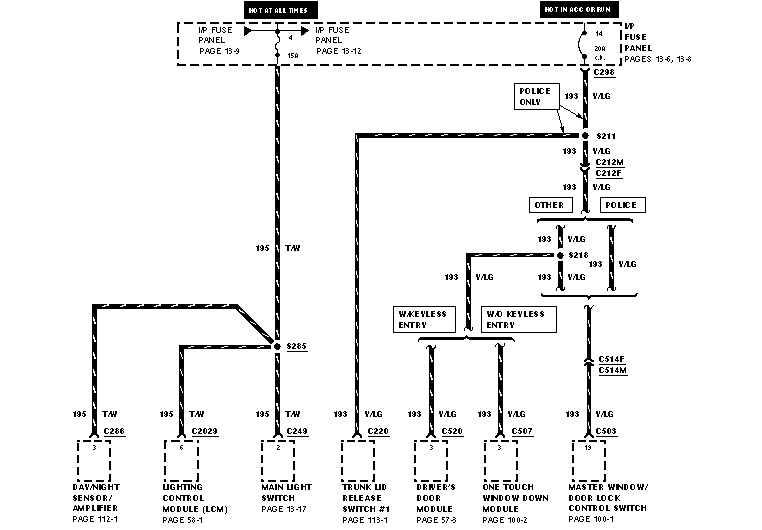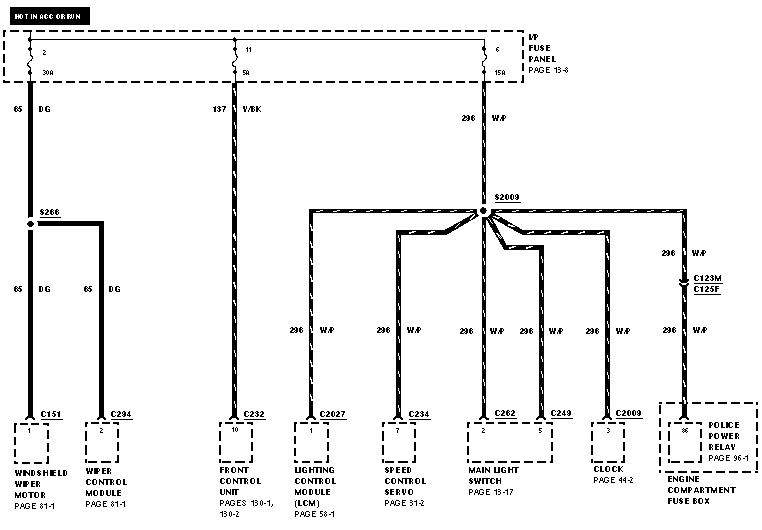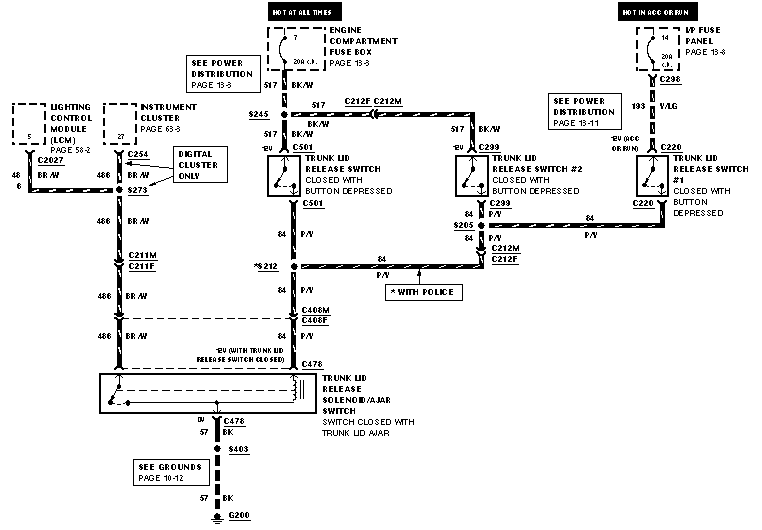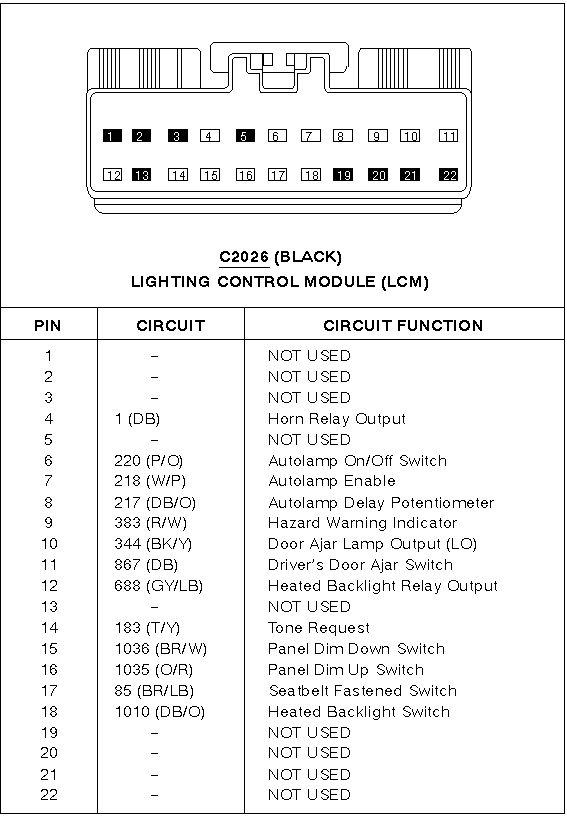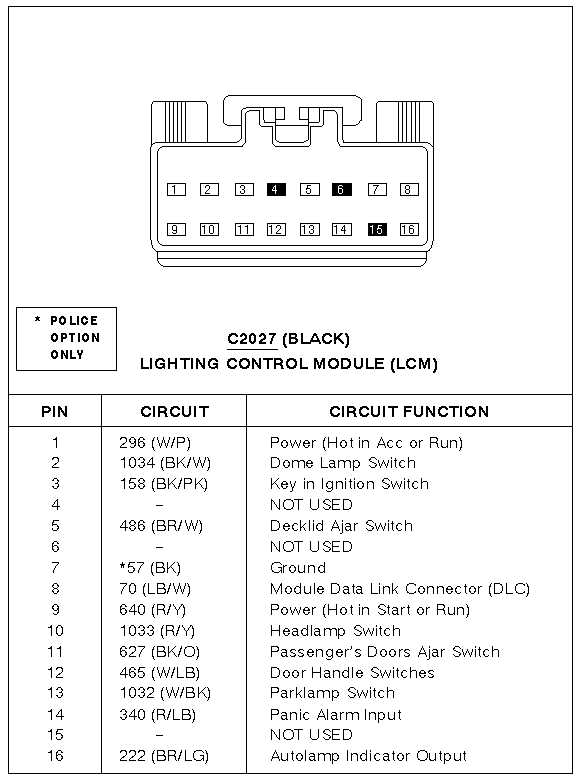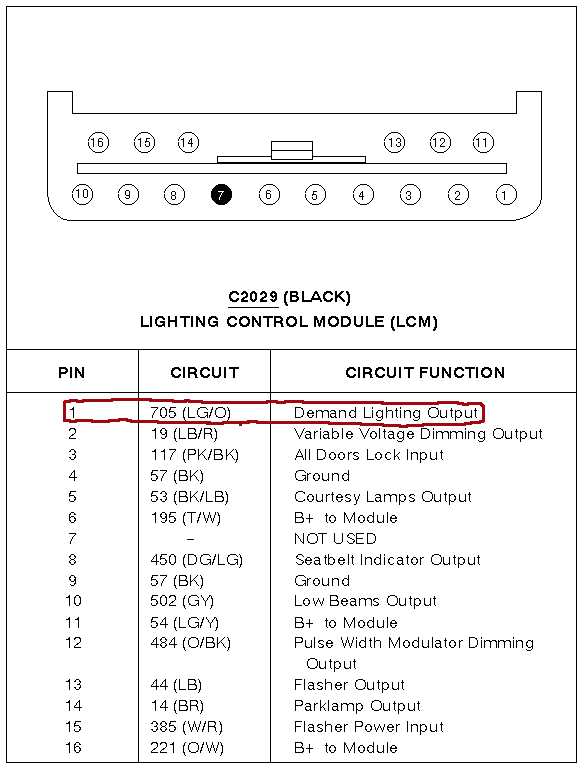| Set (ignition sense wire) |
Reset (door ajar wire) |
Output (to radio and power window relay) |
| 0 (0 Volts) |
0 (No ground path present) |
Previous state |
| 0 (0 Volts) |
1 (Ground path present) |
0 (0 Volts) |
| 1 (+12 Volts) |
0 (No ground path present) |
1 (+12Volts) |
| 1 (+12 Volts) |
1 (Ground path present) |
Does not matter |
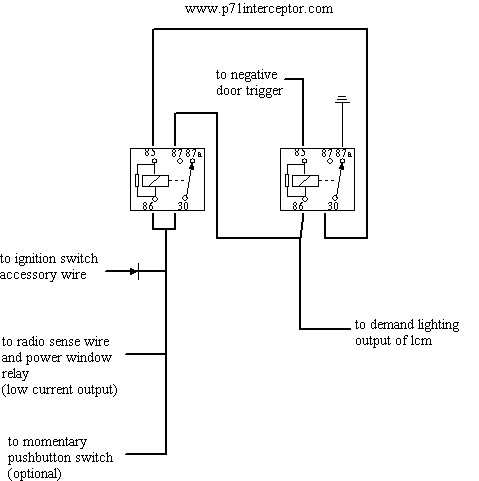
| Set (ignition sense wire) |
Reset (door ajar wire) |
Output |
| 0 (0 Volts) |
0 (0 Volts) |
Previous State |
| 0 (0 Volts) |
1 (+12 Volts) |
0 (0 Volts) |
| 1 (+12 Volts) |
0 (0 Volts) |
1 (+12 Volts) |
| 1 (+12 Volts) |
1 (+12 Volts) |
Does not matter |
